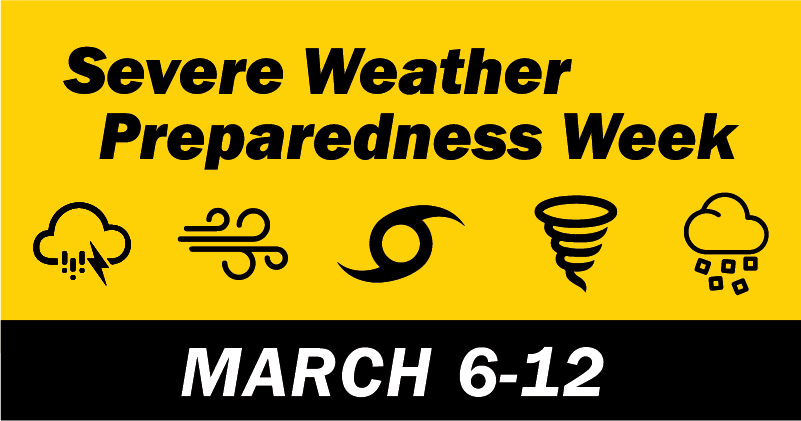
Topics
- Sunday: Receiving Severe Weather Alerts
- Monday: Understanding Weather Warning Terms
- Tuesday: Thunderstorms and Lightning
- Wednesday: Tornado Drill and Preparedness
- Thursday: Flooding
- Friday: Heat
- Saturday: Make a Plan
The National Weather Service uses the words “advisory”, “watch” and “warning” to alert you to potentially dangerous weather. Understanding these terms and knowing how to react can be a life saver.
Keep in mind that severe weather can occur even when there are no watches or warnings issued due to rapid changes in atmospheric conditions. You should always keep an eye on the local conditions and be mindful of places you can go for refuge from potential severe weather.
Advisory
An advisory is issued when a hazardous weather or hydrologic event is occurring, imminent or likely. Advisories are for less serious conditions than warnings. Advisories cause significant inconvenience, and, if caution is not exercised, could lead to situations that may threaten life or property.
Watch
A watch means weather conditions are favorable for dangerous weather to occur. In other words, a “watch” means watch out for what the weather could do, and be ready to act accordingly. You may wish to alter or have a back-up plan for any outdoor activities or travel.
For events that come and go quickly, such as severe thunderstorms, tornadoes and flash floods, a watch means that the odds are good for the dangerous weather, but it not yet happening.
When a severe thunderstorm, tornado or flash flood watch is in effect, you should look for signs of dangerous weather and maintain access to the latest information. Sometimes a severe thunderstorm, tornado or flash flood can happen so quickly that warnings cannot be issued in time.
For longer-lived events, such as floods or winter storms, a watch means that the event is not an immediate threat. For either kind of event, a watch means you should keep up with the weather news and be ready to act.
A winter storm watch means it is time to prepare by stocking up on emergency supplies and making sure you know what to do if a warning is issued.
Warnings
For severe thunderstorms, tornadoes and flash floods, a warning means the weather event is imminent or occurring somewhere in the defined warning area and that people need to take shelter as soon as possible.
Outdoor tornado warnings are normally given by sirens. People indoors should listen to radios, television or weather radio warnings to find out the latest information. Depending on local policy, other types of weather warnings may also broadcast via sirens. Check with local emergency management officials to learn about local siren activations.
A winter storm warning means it is not safe to travel or venture outside. If traveling, head for the nearest shelter.
